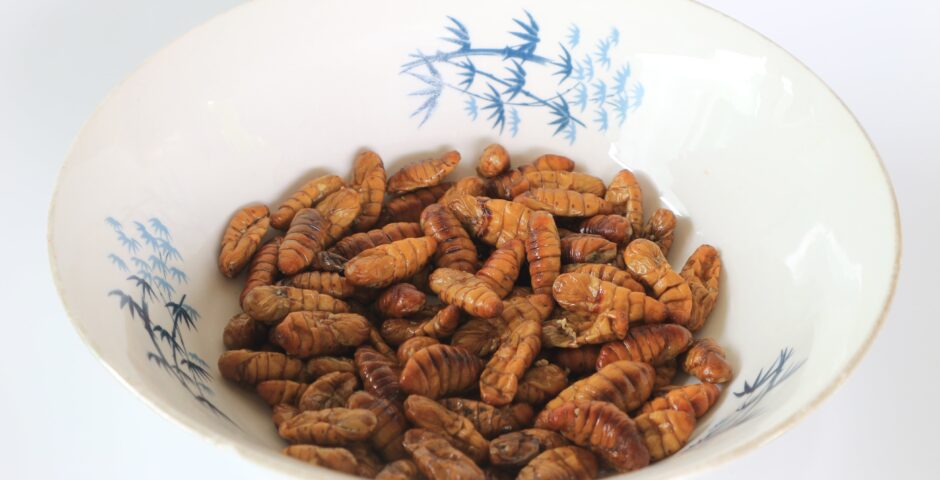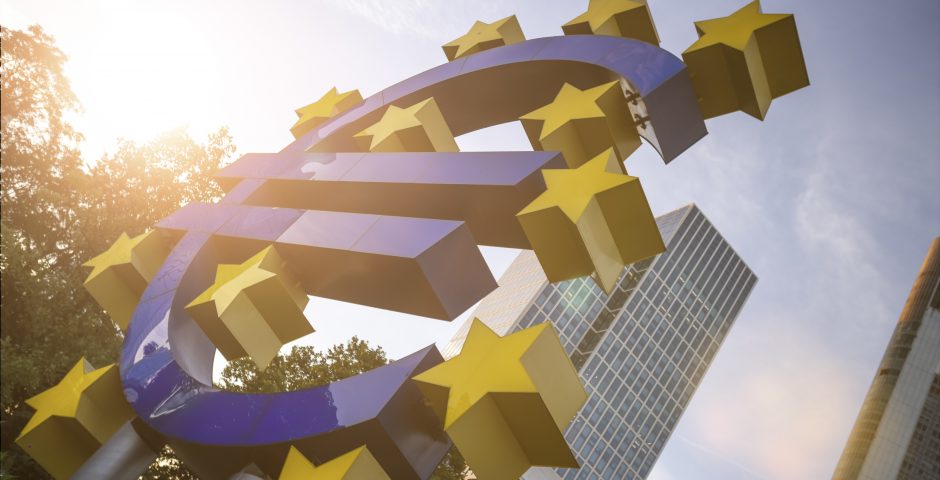Flying into our diets: can the insect industry help the EU to achieve its sustainability goals?

More than two billion people globally incorporate insects into their diets. While there are several reasons for this, varying across questions of tradition and culture, for the most part, the decision of including insects was made out of necessity. In many parts of the world, meat remains a luxury item and not something that is consumed daily. Instead, insects are consumed as the next best protein source. Highly digestible, insects rank highly nutritionally speaking, containing high amounts of proteins and fats. What’s more, when they’re served fried, crispy, and salty, with a side of spicy sauce, crickets can be a fine substitute for the potato crisp!
Across Asia, Latin America, and Africa, insects constitute a large part of societies’ diets. Not only are they a cheaper alternative to meat, but also are less harmful for the environment in their production process. For those concerned with getting sufficient protein in their diets, some insects have up to almost twice that of their animal counterparts, containing values of between 9.96 and 35.2 grams of protein per 100 grams. Despite vast consumption across the three continents, the form of production tends to be small-scale, usually family-farmed with mass production being scarce. On the contrary, in Europe, where insect consumption is neither necessary nor socially normalised, the insect production industry is burgeoning. This can be seen through the increased industrial activity within the sector, including start-ups that offer insect supplemented foods, such as EXO protein and Insectes Comestibles, as well as the newly emerging collaborations being established with continent wide supermarket chains.
From an environmental standpoint, the production of insects has received much attention as far more sustainable compared to animal-based industries. Insect farming is not just being targeted for human consumption but can in fact be used for livestock feed. Currently, the EU relies heavily on soybean for animal feed, yet the negative impact that its production poses is considerable. According to WWF, 23% of soybeans imported from Latin America come from the Cerrado region and 70% of the deforestation and conversion for soybeans in the EU is concentrated in this region. Switching to insect as the main source for animal feed, further deforestation and biodiversity loss in these regions could be avoided.
How palatable is this development in the EU?
Acutely aware of the unsustainable nature of current agricultural practices, alongside the detrimental effect that some livestock industries can pose to the environment, the EU’s Farm to Fork Strategy (F2F) has come to fruition. Part of the EU’s Green Deal, the F2F strategy aims at promoting plant-based diets, reducing animal products, and overall encouraging healthier eating patterns amongst Europeans. Moreover, the potential impact of this scheme is linked to sustainability goals, as people are encouraged to switch from meat and fish towards more sustainable plant-based alternatives. Therefore, the emergence of the insect industry offers additional new substitutes, both for human and animal consumption.
Under the F2F strategy, the EU Commission has developed a framework specifically targeting the sustainability of food chain systems. Under this framework, the Commission has considered ways in which the EU can meet its sustainability goals, with questions of reforming the food system being raised. If adapted successfully, this new framework would allow for far more sustainable agriculture to occur, in so doing striving towards the aims of the F2F strategy. It is for this reason that the EU Commission is greatly supporting the emerging insect market, as from a sustainability standpoint, it satisfies all the requirements. Lower carbon emissions, lesser land and water usage, promotion of biodiversity and healthy ecosystems – insect farming seems like it might just fly.
The Insect Industry’s Paradox
To date, however, little research has been done on the impact of industrial scale insect production due to the only recent appearance of such large-scale farming. Moreover, concern has been raised as to whether insect production might just exacerbate the issue of intensive livestock production if the production of insects were to be used predominantly as animal feed. This highlights the paradoxical issue of insect production, which lies in that of meat consumption. If promotion of plant-centric diets is to continue in the EU, the supposed logical aim is a simultaneous reduction in meat and fish consumption. A reduction in demand for animal produce would result in a lesser need for animal feed, i.e., insects. It can be therefore assumed that insect production is, in essence, a feed production. The paradoxical element of its production rests in that it feeds the intensive industry of livestock farming, allowing the unsustainable nature of animal production to continue growing. This, arguably, is a stark incongruity from where the EU says it wants to be.
And towards the future?
While deemed a possible alternative to meat proteins, incorporating insects into the Western diet won’t be easy. From a cultural and traditional standpoint, many individuals have prejudices towards certain insects as edible food and a ‘revulsion factor’ associated with insect consumption remains. Overcoming this cultural barrier will not be easy, although some companies have started to tackle it through the development of novel foods. Novel foods, which are basically newly developed foodstuffs such as extracts of existing food or agricultural products from third countries such as chia seeds, are made with the use of technology and may include exotic foodstuffs, including insects. Novel foods may be imported into the EU, as greater levels of research focus are being directed towards the safety of insect consumption.
Current Regulation in the EU
Regulation (EC) 258/97 concerning the approval of the sale of novel foods within the European Union has been in force since 1997. The purpose of this regulation is to protect consumers from consuming unsafe foods. In 2021, the EU Commission approved the first insect for human consumption within the Union. A sandbox was created in Brussels, allowing the testing of such insects in human diets, before the proposal was submitted and subsequently, passed. In the same year, the European Food and Safety Authority (EFSA) published a scientific opinion which stated that mealworms pose no problem to human health, in line with recent Commission decisions on reforming the old regulation. If uptake amongst Europeans were to occur, the insect industry predicts that the number of Europeans consuming insect-based foods could skyrocket over the coming decade, reaching a total of 390 million by 2030.
The EU’s Novel Food Regulation (EU) 2015/2283 applies to businesses that wish to bring innovative foods to the EU market. Previously, insects fell outside the scope of this regulation, but new reforms will allow a piecemeal approach in providing market entry for these novel foods. In February of this year, the Commission authorised that house crickets (Acheta Domesticus) can be placed on the market and labelled as food. Giving further discretion to novel food stuffs in the EU market, we can expect to see growth of the insect industry, whether it be for animal or human consumption. The novel food consists of the frozen, dried, and powder forms of house crickets, and can be marketed as a food, additive, or snack. Emerging legislation seems like a progressive step for the insect industry, but the EU should proceed with caution. If the EU wants to achieve the F2F objectives and move away from intensive animal farming, the insect industry might not be the best investment. Whether it will really fly is still a question for debate!
Méabh has obtained a degree in European Studies and German from University College Cork in Ireland and is currently pursuing her double masters degree in European Governance at both Utrecht University and Konstanz Universität.
Image: Shutterstock




